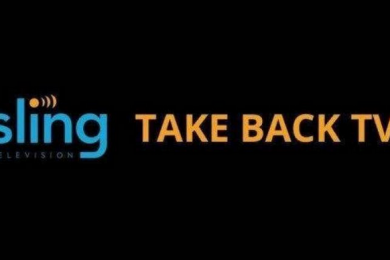Overview
OTA (over the air) TV is a concept whereby an antenna or tuner is used to pick up reception from a nearby broadcast tower, which delivers local channels to your TV, desktop computer or laptop. Depending on how far away you are from a broadcast tower, you will be able to pick up a particular number of channels from broadcasters which are typically local affiliates of major networks such as CBS, NBC and Fox.
The history of OTA TV goes back to when the original TV networks would broadcast from individual broadcast towers. These were connected with cables, which is what led to the term ‘networks’. However, as these used analog signals, it was typical for picture quality to be poor, and reception would not always be stable. What’s more, viewers would need to point their antenna in a different direction every time they switched channels, in order to maximise their opportunity of picking up decent reception.
Cable television was created as a solution to this problem, as high quality streams were delivered to those who signed up for the service. However, while cable has become the norm for Americans across the country, 2009 saw the FCC order the analog signals of OTA TV to be switched to HD resolution. As a result, providing you don’t live in an area with too many obstructions to signal and you have a decent tuner or antenna, you will be able to watch many OTA channels on your television without having to pay for a cable service.
OTA TV antennas
Gaining access to OTA TV simply requires purchasing an antenna, and while this may seem simple at first, there are many options to choose from. You could go for an indoor, outdoor, directional or omnidirectional antenna. Different ranges are specified, there are multiple manufacturers creating antennas, and so on.
To find out which antenna is best for your specific needs, you need to know how far away you are from your nearest broadcast tower, and which channels can be picked up at this location. Fortunately, there are several tools available online to help you do this. Going to websites such as FCC.gov/media/engineering/dtvmaps or TVFool.com allow you to enter your address and find your local over the air TV stations. The tool provides a map and a list revealing the local stations in your area, and this will help you figure out which antenna will provide the best range for you. Other factors to consider include taking note of whether there are obstructions such as hills in the way, and how far up you are (the higher your location, the easier it should be to pick up signal).
If you see channels coming from multiple directions on the map, this indicates that an omnidirectional antenna could be the best choice for you. However, if the channels are all originating from a single direction, it would be better to go for a directional antenna. If you have to get an omnidirectional antenna, it’s safer to go for a stronger one than you would have purchased if you’d been able to get a directional antenna.
Those living 10 to 15 miles away from their nearest broadcast tower can purchase a small omnidirectional indoor antenna. For those between 10 and 30 miles away, a medium omnidirectional antenna or amplified indoor antenna is likely to work well. If you’re between 30 and 45 miles away, go for a medium directional antenna, and large directional antennas are reserved for those living over 45 miles away. If you live further away, it’s generally assumed that the available stations are located in the same direction; those living in suburban and rural areas will often have a cluster of stations in the nearest population center.
Where to mount antennas
As the name suggests, indoor antennas are designed to be mounted indoors. People will often mount them in a location high up on the wall, and then you just need to connect the coaxial cable to the back of your TV. When it comes to outdoor antennas, these will usually be placed high up on the wall outside your home or on the roof. These require finding a way to run the coaxial cable through the walls so it can run from the antenna to your TV. To determine whether you need an outdoor or indoor antenna, consider the range – if you live closer to a station, an indoor one will usually suffice. Additionally, while outdoor antennas tend to be directional, indoor ones are often omnidirectional.
UHF and VHF broadcasts
These acronyms refer to types of broadcasts – in other words, the frequency ranges in which you will find OTA broadcasts. Antennas work to tune into certain frequencies and pick up particular channels, but these frequencies need to reside within a range. The VHF band is also known as the very high frequency band, and ranges from 30MHz to 300MHz. Frequencies which are over 300MHz are ultra high frequencies, falling into the UHF band, and these range from 300 MHz to 3GHz. Most antennas can pick up both UHF and VHF frequencies, as they are essentially two types of antenna in one. However, be sure that this is stated in the product description before you buy one.
Which antenna is right for you?
Indoor/Outdoor Antenna
These come in an omnidirectional format, unlike most outdoor antennas. They are amplified and powerful, yet much smaller in size than the rooftop antennas which are generally large and made of metal. If you need a more powerful antenna to gain access to broadcast tower signals between 40 and 50 miles away, but you don’t want the hassle of a rooftop outdoor antenna, these are a good choice.
Directional Outdoor Antenna
While these can take a lot of time and effort to set up compared with other brands of antenna, you’ll experience an unparalleled range and power with these models. These will need to be pointed at the broadcast tower you’re trying to pick up a signal from, and this tends to work out best for rural areas. If you live fairly far away from a densely populated area and need a lot of range to pick up channels, you’d probably be better off getting one of these.
Small Omnidirectional Indoor Antenna
These small and cheap antennas work for people who live in urban locations. They will have a loop design and provide short range coverage. These work well for those who are in cities or densely populated locations with broadcast towers located around 10 to 15 miles away.
Omnidirectional Indoor Antenna
Suitable for urban and suburban dwellers, these provide plenty of range and come in many sizes. Sometimes they are classed as both medium and large indoor antennas. If you live within 20 to 50 miles of your local broadcast tower, and live either in the city or suburbs, one of these antennas should do the job.
Amplified Omnidirectional Indoor Antenna
If you don’t get the signal you desire with an indoor antenna, amplifying it could help you get the range which is often comparable with outdoor antennas. If you require long range coverage, but it’s also directional, or you don’t want to find a way of mounting an antenna on your roof, this is a good option.
OTA TV: Additional Features
Using a media server and TV tuner
Another way of streaming OTA TV is by using a TV tuner, usually plugged into your desktop computer or laptop, combined with a media server such as Plex. The antenna will connect to the TV tuner, which is connected to the desktop device. If you make use of the live TV feature seen with Plex, you gain the ability to use this device for streaming and recording OTA TV, despite it not being connected to the antenna in itself.
OTA DVR
As the name suggests, these devices enable DVR functionality for OTA TV. They have TV tuners and WiFi connections, allowing users to connect an antenna and then use devices which run the OTA DVR app to schedule and view recordings. Some models will also allow for streaming live TV.
Summary
OTA TV is a concept that increasing numbers of cable and satellite customers are catching on to, researching and then making the decision to become cord cutters and invest in TV antennas. Providing you live in an area that isn’t prone to too many obstructions, there are plenty of models available for picking up channels within ranges which can reach up to 70 miles. Whether you go for a small indoor device or a large outdoor one, have broadcast towers in one location or all around you, OTA TV is a free, convenient and high quality way to stream live television.














